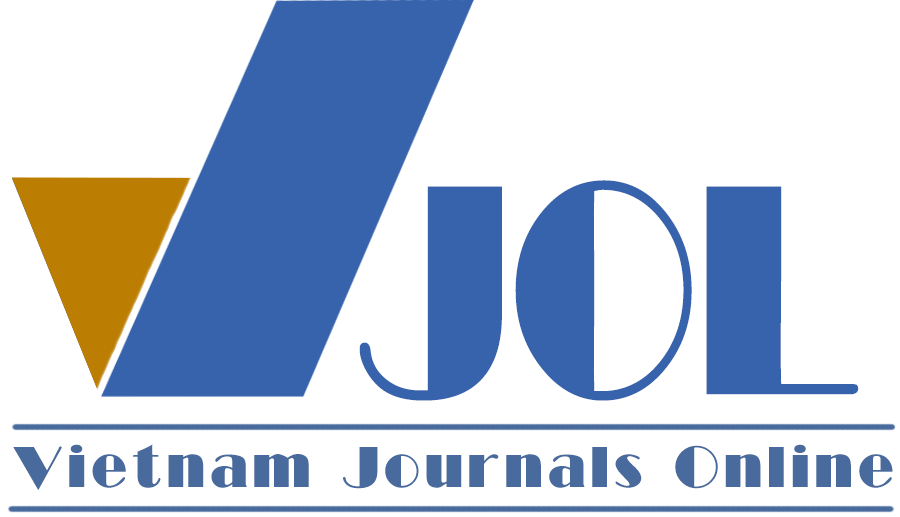Assessing the impact of the employee stock ownership plan using the Difference-in-Differences method
Authors
DOI: https://doi.org/10.57110/vnu-jeb.v4i3.289Keywords:
ESOPs, firm performance, ROA, ROE, DIDReferences
Al Momani, K. M. D. K., Jamaludin, N., Abdullah, W. Z. W., & Nour, A. N. I. (2020). The effects of intellectual capital on firm performance of industrial sector in Jordan. Humanities & Social Sciences Reviews, 8, 184-192. https://doi.org/10.18510/hssr.2020.8222
Blasi, J., Kruse, D. & Weltmann, D. (2013). Firm survival and performance in privately held ESOP companies. In Sharing Ownership, Profits, and Decision-making in the 21st Century. Emerald Group Publishing Limited, 109-124. https://doi.org/10.1108/S0885-3339(2013)0000014006
Dunbar, A. E. & Kumbhakar, S. C. (1992). An empirical investigation of the association of productivity with employee stock ownership plans. The Journal of the American Taxation Association, 14, 22-38.
Dunn, G. P. & Daily, C. M. (1991). The fusion of privilege and power: ESOPs in theory and practice. Employee Responsibilities and Rights Journal, 4, 61-74. https://doi.org/10.1007/BF01390439
Handayani, F., & Yurniwati, Y. (2020). Analysis of the influence of employee stock ownership program (ESOP) application of company financial performance. Jurnal Ilmiah Universitas Batanghari Jambi, 20(2), 616-625. https://doi.org/10.33087/jiubj.v20i2.978
Kurland, N. (2018). ESOP plus benefit corporation: Ownership culture with benefit accountability. California Management Review, 60 (4), 51-73. https://doi.org/10.1177/0008125618778853
Lestari, H. S. (2021). Financial leverage and financial performance of conventional banks in Indonesia. Journal of Hunan University Natural Sciences, 48(2).
Ma, J., Guo, K., & Yu, J. (2020). Democracy and tax avoidance: An international study. Journal of Corporate Accounting & Finance, 31(1), 18-52. https://doi.org/10.1002/jcaf.22416
Malesky, E. J., Nguyen, C. V., & Tran, A. (2014). The impact of recentralization on public services: A difference-in-differences analysis of the abolition of elected councils in Vietnam. American Political Science Review, 108(1), 144-168. http://doi.org/10.1017/S0003055413000580
Nelson, B. (2000). Shared endeavours: Inquiry into employee share ownership in Australia. House of Representatives Standing Committee on Employment. Canberra, Department of Education and Workplace Relations, 2-104.
Nguyen, T. K. N. (2022). Impact of employee stock ownership plan on employee commitment to the banking and finance sector in Vietnam. Economy & Forecast Review, 24(814).
Pendleton, A., Wilson, N. & Wright, M. (1998). The perception and effects of share ownership: Empirical evidence from employee buy-outs. British Journal of Industrial Relations, 36(1), 99-123. https://doi.org/10.1111/1467-8543.00082
Ros, A. J. (2003). Do ESOPS motivate employees? Worker effort, monitoring and participation in employee-owned stock ownership plans. Advances in the Economic Analysis of Participatory & Labor-Managed Firms, 7, 83-103. https://doi.org/10.1016/S0885-3339(03)07006-6
Scarpati, K. D. (2023). Organizational Attractiveness and Employee Longevity at Employee Stock Ownership Plan (ESOP) Companies in Northern New England. Doctoral dissertation, Wilmington University (Delaware).
Tran, P. H. H. (2020). Effectiveness of policy measures to promote employee share ownership programs in banks. Journal of Behavioral and Experimental Finance, 28, 100401. https://doi.org/10.1016/j.jbef.2020.100401
Xiao, H., Shi, Y. & Varma, A. (2019). The effects of employee stock ownership plans on career development in a new era: Evidence from China’s manufacturing transformation. Career Development International, 24(5), 453-474. https://doi.org/10.1108/CDI-05-2018-0126
Downloads
Additional Files
Published
Abstract View
PDF Downloaded
How to Cite
Issue
Section
License
Copyright (c) 2024 Luu Thu Quang

This work is licensed under a Creative Commons Attribution-NonCommercial 4.0 International License.
by VNU Journal of Economics and Business






